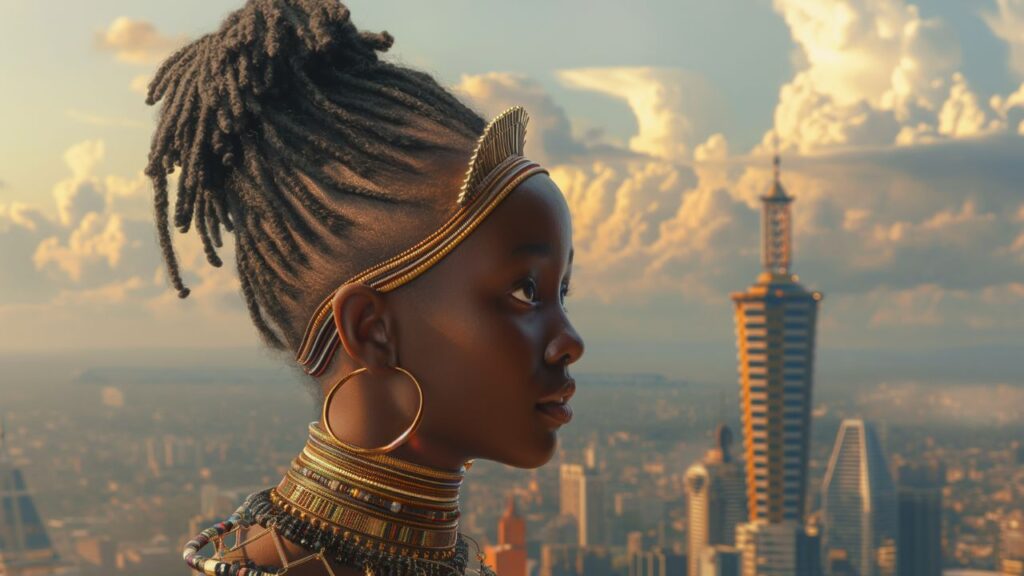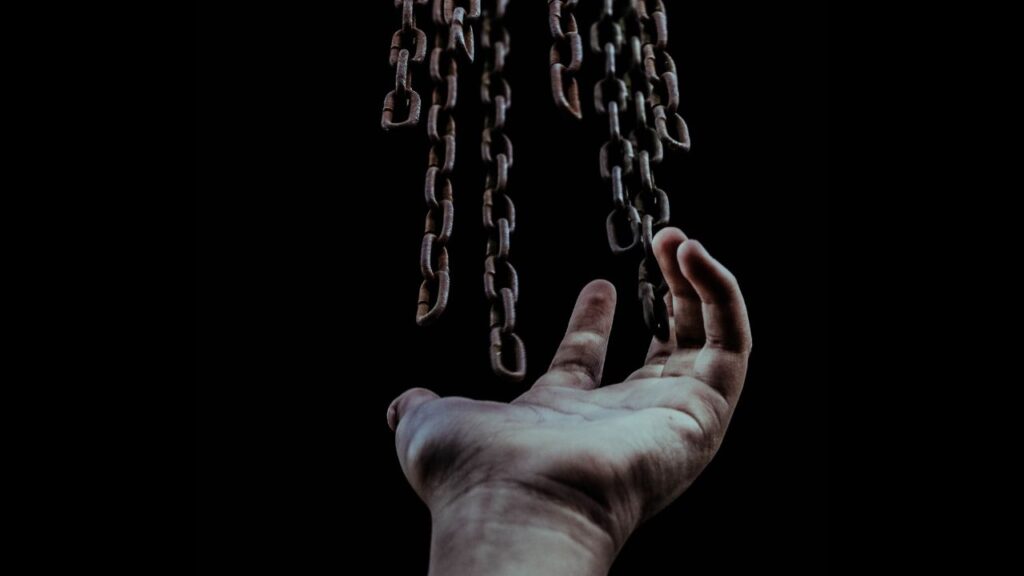Following the death of Queen Elizabeth II, I watched the televised service at St. Giles’ Cathedral in Edinburgh attended by the royals and various Scottish dignitaries, as well as the many hundreds who came out to pay their respects or to be a part of this historical event.
As I watched the outpouring of public emotion, I couldn’t help but wonder what emotions the queen’s death would invoke in those whose lives have been blighted because of the British colonial policies that killed millions and left a legacy of misery and disenfranchisement in countries far too many to name.
At first I was saddened by the news. But then came the reactions of global figures the world over, with some proclaiming outright that Queen Elizabeth had been a guiding light, a symbol of hope and stability in the world. One broadcaster went so far as to say “She was everybody’s grandmother.” My problem was that she wasn’t mine.
My grandmother, born in 1923, was just three years old when the Queen was born, my 81-year-old mother told me when I called to get her reaction to the news that the Queen had died. “She would’ve been 99 years old today if she had she lived,” my mom said. I could hear the emotion in her voice as she remembered her mother. My grandmother died in 1983; she was 59 years old. I was then just 18 years old. I said, “Mom with all the things we know about the racist systems that have kept Black and Brown people oppressed, I really don’t know how I want to feel about the death of the British Queen.” Never one to mince her words, my mom replied, “She was a human being, and we, well you know, we mourn the loss of any life.”
Yes. She may have been a grandmother to many but to me she was a symbol of institutionalized racism in its clearest form. Images of British dynasty have been present in the education of every American who has gone through the public school system since the Second World War during which the United States allied with Britain in their quest for global power and dominance. Yet here was the evil of the Crown being portrayed in the media—as it’s always been portrayed—as providence, something divine. As I listened to a special broadcast by the popular British talk show host James Corden talking to an American audience about the Queen’s passing, his tone struck me as odd: “She will be missed, she was everybody’s grandmother,” he said, going on to tell us how well she had served the country and the world.
As I was listening to Corden and wondering why I was so irritated by his outpouring of emotion, it dawned on me that racism moves from generation to generation, falling back on the old practices of how to colonize a nation: You teach them to love you more than they love themselves. Racism survives because the symbols of racism never die. We carry the symbols in our hearts and in our minds and once we have identified with them, we seek to justify their existence. While I could empathise with those that felt a special connection to the Crown, what I realized and felt most immediately, was the insensitivity I received as an African American who bears the scars of the legacy of slavery that has made the British Empire one of the richest and most powerful nations in the world today.
The next day I watched the funeral procession move through the streets of Edinburgh, the commentators conveying the solemn mood of the people who came out to pay tribute to their Queen. All the while I couldn’t see past the 1989 image of Princess Diana hugging a child suffering from HIV/AIDS. On her first unaccompanied trip overseas, Princess Diana spontaneously broke with protocol and showed compassion towards a suffering Black child with all the world watching, at a time when the stigma of HIV/AIDS was as bad as the disease, and Blacks were being impacted the most and no one else seemed to care. Diana’s humanity helped solidify her reputation as the “People’s Princess” and it radically changed the way AIDS sufferers were perceived.
While the news played on I thought about two recent exchanges I had had in Amsterdam, just outside my front door. The first exchange took place in a cafe.
I was sitting at the bar having a coffee. Another Black male of Surinamese origin was sitting a couple of tables away. It was midmorning and we were the only ones there. In an attempt to start a conversation, as men do, he asked my opinion on the war in Ukraine. I told him I thought it was crazy, all too unreal. The white Dutchman behind the counter leaned over and candidly shared, “I don’t give a shit about the war in Ukraine.” I didn’t speak again and left the bar so abruptly the young brother asked, “You leaving?” I was in no mood to have that conversation so early in the day, having experienced the backlash of the “Black Lives Matter” protest with the counter-narrative that All Lives Matter; I’ve learned that sometimes it’s better to just hold one’s peace and walk away. (It literally is your peace.)
Shortly after that incident, a couple of days later, I had another encounter that made me realize that we simply can’t afford not to care. I had wandered into a tool shop on the corner of my street that looks more like a men’s gift shop inside than a hardware store selling nails, drills and plywood. Behind me walked in a man who apparently knew what he wanted because we reached the cash register at the same time, he with a power drill in his hand. I moved aside to let him be the first in line, not sure if I was done.
The Dutchman behind the counter seemed not to have noticed that the man with the drill wasn’t Dutch and didn’t speak the language. But to his credit, he did know what he wanted: the drill and a bag in which to put the canisters of spray paint he had already placed on the counter. Being familiar with Eastern Europeans, I assumed the man was Polish and asked “Polske?” “No! Ukraine!” he said, then, smiling, added, “Close.”
“Hij wil een tas.” He wants a bag, I said to the clerk; bags are not automatically handed out after a purchase these days. The clerk then understood and reached under the counter. I was pleased I could help and the Ukrainian was happy as well. To my surprise, as I placed my items on the counter, the Ukrainian tapped my shoulder and offered a fist bump.
I say all this to say of the human condition that people appreciate what they understand. And sadly enough, we rarely think about injustice until it is visited upon us.
Whose permission do we now need to talk about racism and the policies that still impact us today? Africa and the African diaspora’s historical issues are and always have been about racism and this is why members of this group, my group, will always hold a contrarian view when the West attempts to compel us to join them in their moment of grief. My grandmother died in 1983, at the young age of 59, in a small southern town next to a river; there was no horse and carriage, no media. The British Empire once covered the whole world, a dominance that was achieved through suppression and oppression. Many atrocities were committed and entire communities decimated under the authority of the Queen. I was raised never to speak ill of the dead because they aren’t here to defend themselves but I will submit this: it is painful to always have to consider the feelings of others while legitimate calls for acknowledgement of racial injustice and reparations are consistently ignored and dismissed. Where is the same fervour and energy for those issues that matter to us?
When we as Black people keep the peace, we empower the presence of the historical lie that we are inferior and thus require control. When we remain silent we allow the systems of the institutions and the prejudices that block our collective growth to thrive. Why should we care about the death of the Queen when the Queen has stood for the oppression of our people? Why should we be guilt-tripped into silence, into not speaking out about the dead, into not pursuing our freedom? When will our emergency, the issues that impact Black and Brown people, become a top concern for the White world? When will I be able speak without fear of being branded just another angry black man, angry for what I don’t have that others do?
Sad as the Queen’s death is to those that survive her, honouring her service is a symbolic gesture that must be contextualized because, for many, and not just in the UK but all over the world, the English monarchy is a symbol of oppression. I recently listened to a podcast in which a Black podcaster scolded an guest who said this of the Queen: “She is the symbol of colonialism and racism for many; however much we want to romanticize the Queen of England’s long reign on the throne as a stabilizing force on earth, she has also allowed many human rights violations on her watch”. The podcaster’s response was a classic putdown, “Why do Black people have to always bring up racism? Someone’s grandmother just died!”
Racism endures because when we identify with its symbols, we will do anything and everything in our power to justify and defend them.








